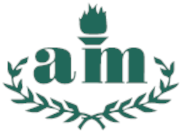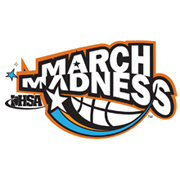 |
home news site map contact |
|
Activities
Sportsmanship
General Resources
Administration
|
|
ActivitiesClass SplitHow is the split between classes determined?A complete list of schools entering a given activity is computer generated. The report lists the schools from the highest enrollment to the lowest. The enrollment figure that is used is based on a school's 7-8 enrollment, as reported by the member school to the IESA. Two-Class ActivitiesThe highest fifty percent of the schools entered in the activity are Class AA and the lowest fifty percent become Class A. For example, if there are 250 schools entered in girls softball, then the 125 schools (50%) with the largest 7-8 enrollment become Class AA and the bottom 125 schools become the Class A schools in softball. Since there is no "magic number" at where the cutoff between Class AA and Class A occurs, the actual number for the cut-off will vary from sport to sport and from year to year. It all depends on the enrollment of the schools and the number of schools that enter the activity each year. It is entirely possible that a school is Class A for one activity and Class AA for a different activity. Three-Class ActivitiesThe highest thirty-three percent of the schools entered in the activity are Class 3A, the next thirty-three percent of the schools entered in the activity are Class 2A, and the lowest thirty-three percent become Class 1A. For example, if there are 300 schools entered in boys baseball, then the 100 schools (33%) with the largest 7-8 enrollment become Class 3A, the 100 schools that fall between the top 33% and the bottom 33% are Class 2A, and the bottom 100 schools become the Class 1A schools in baseball. Since there is no "magic number" at where the cutoff between classes occurs, the actual number for the cut-off will vary from year to year. It all depends on the enrollment of the schools and the number of schools that enter the activity each year. It is entirely possible that a school is Class A for one activity and Class AA for a different activity. Four-Class ActivitiesThe highest twenty-five percent of the schools entered in the activity are Class 4A, the next twenty-five percent of the schools entered in the activity are Class 3A, the next twenty-five percent of the schools entered in the activity are Class 2A, and the lowest twenty-five percent become Class 1A. For example, if there are 400 schools entered in boys basketball, then the 100 schools (25%) with the largest 7-8 enrollment become Class 4A, the 100 schools that fall between the top 25% and the bottom 50% are Class 3A, the 100 schools that fall between the bottom 25% and the top 50% are Class 2A, and the bottom 100 schools become the Class 1A schools in basketball. Since there is no "magic number" at where the cutoff between classes occurs, the actual number for the cut-off will vary from sport to sport and from year to year. It all depends on the enrollment of the schools and the number of schools that enter the activity each year. It is entirely possible that a school is Class A for one activity and Class AA for a different activity.
NOTE: The number of schools listed for each activity is the number of teams entered in the state series at the time the split to determine classification was made. This number may change slightly during the season as schools may enter the state series after the split (but before the final entry deadline) or there are schools that drop their entry after the split has been made. Regardless, the numbers listed remain the same once the classification split has been determined even if schools are added or dropped. NOTE: The split number represents the enrollment at which the break between classes occurs. For example, with a split number of 155, schools with enrollment up to 155 will be in Class A, schools with enrollment of 156 or more will be in Class AA. Q: What happens if there are two or more schools with the same enrollment where the cut-off for a given class occurs? A: In these situations, which often happens, all of the schools with the same enrollment will be placed in the smaller class. For example, let's say there are 400 schools entered in boys basketball. With 4 classes, in theory, that would put 25% of the schools in each class---the 100 schools with the highest enrollment in Class 4A; the next highest 100 schools in Class 3A; the next 100 schools in Class 2A; and the smallest 100 schools in Class 1A. When counting from the highest enrollment school to the 100th school on the list, it turns out that at the 100th school, three schools have the same enrollment number. To that end, only 97 schools will be placed in class 4A. When counting down the next 100 and assuming there are not multiple schools with the same enrollment, there would be 100 schools placed in Class 3A; again assuming there are not multiple schools at the same number when counting down the next 100 there would be 100 schools in Class 2A which would then leave 103 schools in Class 1A. If there are no schools with the same enrollment where the split should occur, then it would be an even 25% in each class. As is almost always the case though, there are multiple schools with the same enrollment where the exact split would occur. There is no way that schools with the same enrollment can be placed in different classes and so the policy is to place all schools with the same enrollment in the next lowest class if the split occurs in the middle of the schools with the same enrollment. NOTE: Wrestling became a two-class sport for the first time in 2018-19. NOTE: Track & Field became a four-class sport for the first time in 2019-20, though the state series was canceled due to the coronavirus pandemic. NOTE: Cross Country became a four-class sport for the first time in 2023-24. |
|||||||||||||||||||||||||||||||||||||||||||||||||||||||||||||||||||||||||||||||||||||||||||||||||||||||||||||||||||||||||||||||||||||||||||||||||||||||||||||||||||||||||||||||||||||||||||||||||||||||||||||||||||||||||||||||||||||||||||||||||||||||||||||||||||||||||
If you encounter an error message, please contact our webmaster.
Tell us your school, and be as specific as you can about the problem.
Most helpful would any error information listed as part of the error page.
















